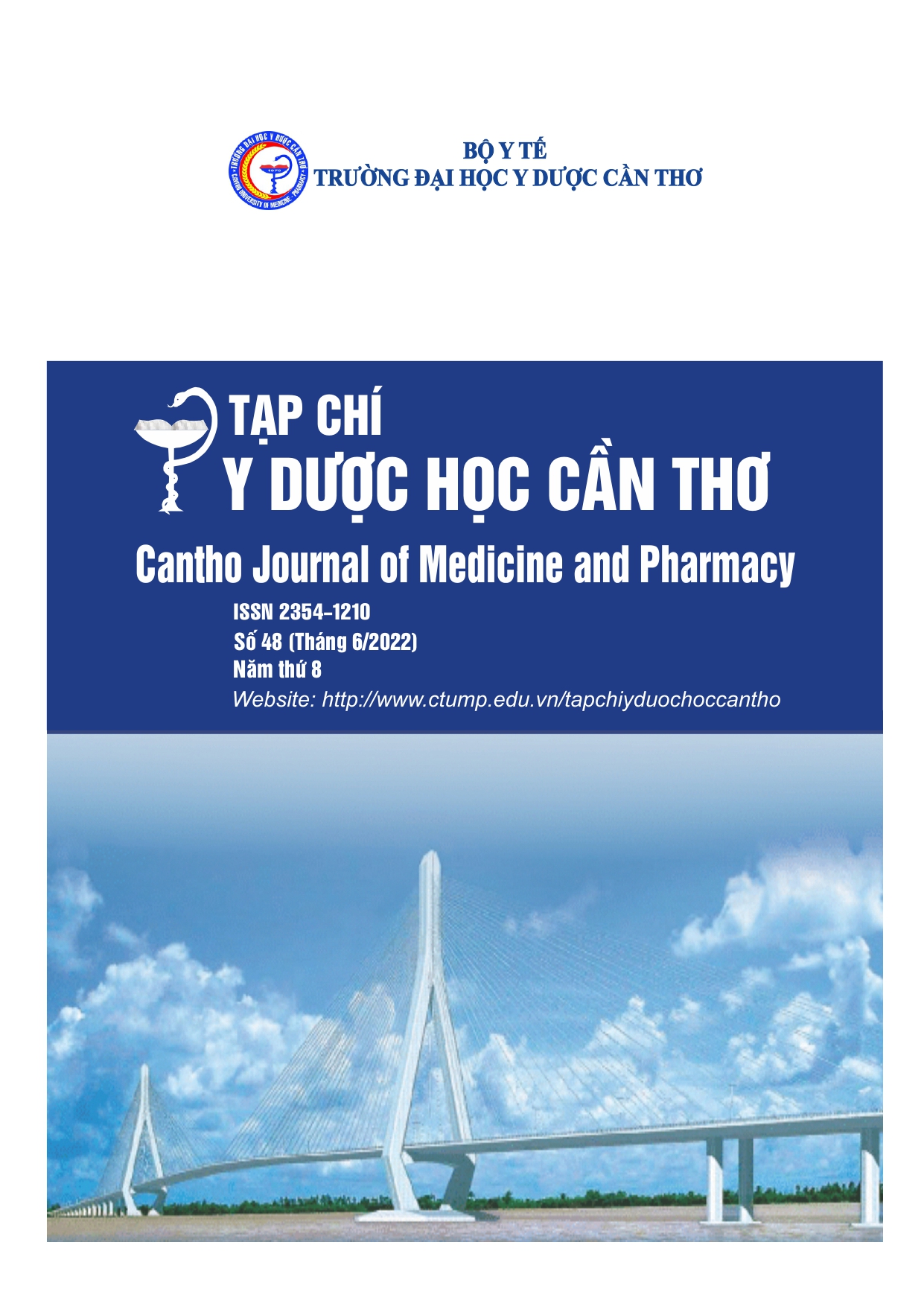TREATMENT RESULTS OF PRIMARY NEPHROTIC SYNDROME IN ADULTS WITH CORTICOSTEROID THERAPY PROTOCOL AT CAN THO UNIVERSITY OF MEDICINE AND PHARMACY HOSPITAL
Main Article Content
Abstract
Background: Treatment of patients with nephrotic syndrome (NS) in the Mekong Delta region is difficult because the pathophysiological lesion has not been identified. Therefore, it is necessary to choose an empiric treatment regimen for primary nephrotic syndrome in the absence of renal biopsy. Objectives: To evaluate some clinical and subclinical characteristics and treatment results of primary nephrotic syndrome in adults at Can Tho University of Medicine and Pharmacy hospital. Materials and methods: A cross-sectional descriptive study in 36 patients with NS treated at Can Tho University of Medicine and Pharmacy Hospital from March 2019 to March 2021. Results: Women were 52.8%, 97.2% patients under 60 years-old. Edema and foamy urine was 100% and 97.2%, respectively. There were 77.8% patients with proteinuria >5g/24 hours. The majority of patients had features of atypical nephrotic syndrome with 30.6% gross hematuria, 77.8% hypertension and 27.7% decreased glomerular filtration rate <60ml/min/1.73m 2. After 8 weeks of treatment, 22.2% of patients had negative 24-hour proteinuria, 77.8% after 24 weeks. Complete remission and partial remission after 12 months was 63.9%, and 19.4%, respectively; 16.7% patients were dependent on corticosteroids or relapsed. Conclusion: Edema and foamy urine were the two main clinical symptoms of patients with NS. The response rate to corticosteroid therapy protocol after 12 months in adult nephrotic syndrome was relatively high.
Article Details
Keywords
Nephrotic syndrome, adults, treatment, corticosteroid, Can Tho
References
2. Hà Phan Hải An (2018), “Hội chứng thận hư”, Bệnh học nội khoa, NXB Y Học, Hà Nội, tr.375-384.
3. Bộ Y Tế (2016), “Hướng dẫn chẩn đoán và điều trị một số bệnh về thận-tiết niệu”, NXB Y Học, Hà Nội.
4. Nguyễn Bách, Lê Ngọc Trân và Huỳnh Ngọc Linh (2014), “Một số đặc điểm bệnh lý cầu thận ở người cao tuổi tại Bệnh viện Thống Nhất”, Tạp chí Y học thành phố Hồ Chí Minh, tập 14 (4), tr.166-171.
5. Ngô Quý Châu (2017), “Triệu chứng học nội khoa”, Tập 1, NXB Y Học, Hà Nội.
6. Châu Ngọc Hoa (2017), “Triệu chứng học nội khoa”, Nhà xuất bản Y học, Chi nhánh thành phố Hồ Chí Minh.
7. Hà Hoàng Kiệm (2014), “Hội chứng thận hư”, Thận học lâm sàng, NXB Y Học, Hà Nội, tr.336-342.
8. Huỳnh Ngọc Phương Thảo và Nguyễn Thị Ngọc Linh (2017), “Hội chứng thận hư”, Bệnh học nội khoa, NXB Y Học, chi nhánh thành phố Hồ Chí Minh.
9. Fernando Nolasc and et al. (1986), “Adult—onset minimal change nephrotic syndrome: A long—term follow—up”, Kidney International, Vol. 29, pp. 1215-1223.
10. Meryl Waldman, R. John Crew, Anthony Valeri et al. (2007), “Adult Minimal-Change Disease: Clinical Characteristics, Treatment, and Outcomes”, Clinical Journal of the American Society of Nephrology, May 2007, 2(3), pp.445-453.
12. Varshney Amit, Gupta Vijay, Sachan Amit and et al. (2015), “Nephrotic Syndrome: ClinicoHistopathological Spectrum in Tertiary Care Hospital of Rohelkhand of U.P (Bareilly)”, Journal of Medical Science and Clinical Research, Vol.3(8), pp.6904-6910.
13. Vishal Golay, Mayuri Trivedi, Anila Abraham Kurien et al. (2013), “Spectrum of Nephrotic Syndrome in adults: Clinicopathological study from a single center in India”, Renal Failure, 35(4), pp.487-491.


